
Gorodenkoff / Shutterstock.com
Editor’s Be aware: This story initially appeared on Building Protection.
The well being of the US manufacturing sector has been the main focus of public consideration in recent times, with populist political figures equivalent to Donald Trump on the best and Senator Bernie Sanders on the left criticizing US commerce coverage and debating how one of the best ways to do that is to assist American producers and staff. Politicians and enterprise leaders of all stripes have put a brand new concentrate on supporting manufacturing. From former President Trump’s concentrate on commerce coverage and President Joe Biden’s $1.2 trillion bipartisan infrastructure invoice, to corporations “relocating” factories and shoppers expressing preferences for American-made items , tackling the obvious decline in US manufacturing has turn into a shared dedication.
Manufacturing is essential to the US financial system for various causes. Manufacturing jobs have traditionally been a route into the center class and provided good pay with out requiring a high level of training. Firms that depend on manufacturing make investments closely in analysis and growth, which helps drive innovation. Home manufacturing additionally contributes to safer and extra resilient provide chains – a degree that has turn into clear throughout the COVID-19 pandemic.
However in current many years, the position of producing within the US financial system has declined. Many corporations started transferring factories abroad in quest of decrease prices and higher revenue margins. Commerce agreements like NAFTA lowered the price of international imports and gave US producers extra competitors. Technological advances made manufacturing processes extra environment friendly, lowering the necessity for a lot of manufacturing jobs.
The impression of those shifts in manufacturing is most evident in employment, which has declined over time as a share of complete employment and in complete. After manufacturing accounted for almost 40% of US jobs on the top of World Struggle II, the sector has seen a gradual decline over time to about 8.4% of employment in the present day. By way of complete employment, manufacturing jobs peaked at 19.5 million within the late Nineteen Seventies and fell sharply after 2000 to simply 12.6 million in the present day.
However regardless of the decline in manufacturing employment over the previous couple of many years, manufacturing output as a share of actual GDP has remained comparatively secure. Since 1997, manufacturing has fluctuated between 11.5% and 13.2% of GDP adjusted for inflation. Whereas manufacturing output as a share of nominal GDP has declined over the interval (from 16.2% to 10.9%), the change in nominal figures tends to mirror each progress in different sectors and a slower rise in manufactured items costs as a decline in manufacturing productiveness.
The info used on this evaluation comes from the US Bureau of Financial Evaluation, researchers examined GDP, employment charges and different components. See the top for extra data on our methodology.
15. Tampa-St. Petersburg-Clearwater, FL
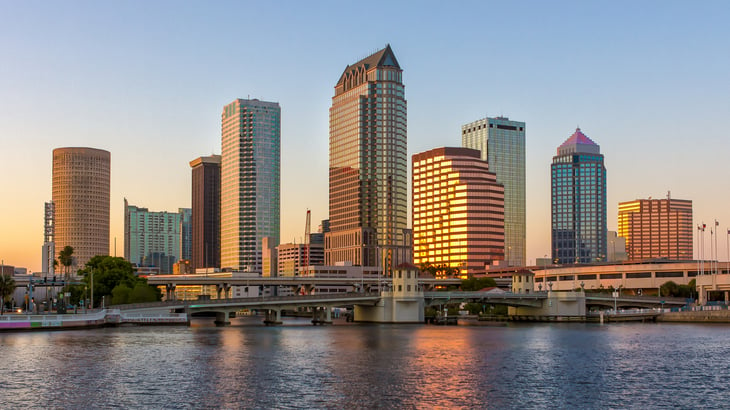 kevin-j-king / Shutterstock.com
kevin-j-king / Shutterstock.com
- General rating: 59.2
- Employment progress in manufacturing (2010-2020): +16.5%
- Manufacturing GDP progress (2010-2020): +48.1%
- Share of producing in complete employment (2020): 4.0%
- Share of producing in complete GDP (2020): 7.7%
14. Tucson, Ariz
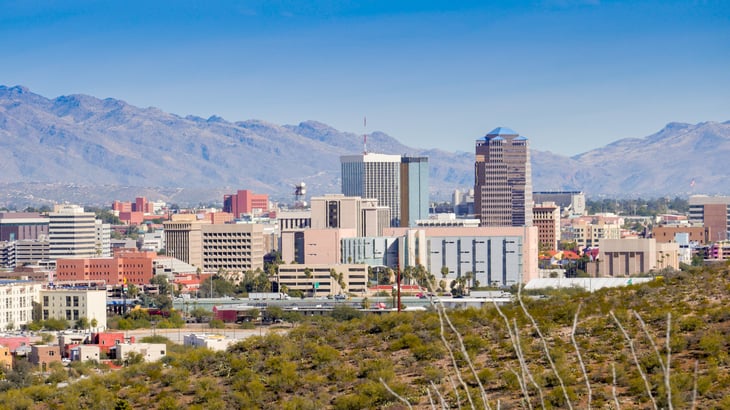 Chris Rubino / Shutterstock.com
Chris Rubino / Shutterstock.com
- General rating: 59.4
- Employment progress in manufacturing (2010-2020): +13.9%
- Manufacturing GDP progress (2010-2020): +28.4%
- Share of producing in complete employment (2020): 5.7%
- Share of producing in complete GDP (2020): 12.6%
13. Orlando-Kissimmee-Sanford, FL
 image not obtainable
image not obtainable
- General rating: 60.9
- Employment progress in manufacturing (2010-2020): +33.5%
- Manufacturing GDP progress (2010-2020): +36.1%
- Share of producing in complete employment (2020): 3.3%
- Share of producing in complete GDP (2020): 4.9%
12. San Antonio-New Braunfels, TX
 Sean Pavone/Shutterstock.com
Sean Pavone/Shutterstock.com
- General rating: 62.4
- Employment progress in manufacturing (2010-2020): +13.7%
- Manufacturing GDP progress (2010-2020): +128.4%
- Share of producing in complete employment (2020): 3.8%
- Share of producing in complete GDP (2020): 9.5%
11. Austin-Spherical Rock-Georgetown, TX
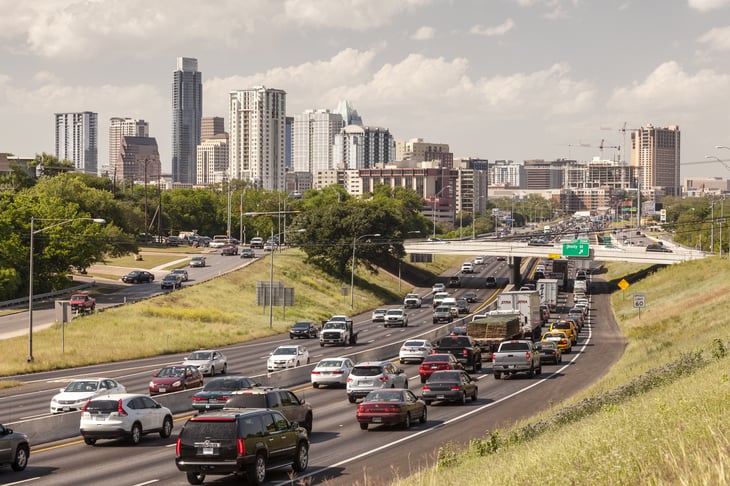 Philip Lange / Shutterstock.com
Philip Lange / Shutterstock.com
- General rating: 62.6
- Employment progress in manufacturing (2010-2020): +30.9%
- Manufacturing GDP progress (2010-2020): +21.9%
- Share of producing in complete employment (2020): 4.5%
- Share of producing in complete GDP (2020): 11.2%
10. Tulsa, okay
 Sean Pavone/Shutterstock.com
Sean Pavone/Shutterstock.com
- General rating: 63.7
- Manufacturing employment progress (2010-2020): +16.8%
- Manufacturing GDP progress (2010-2020): +20.5%
- Share of producing in complete employment (2020): 9.1%
- Share of producing in complete GDP (2020): 13.3%
9. Phoenix-Mesa-Chandler, AZ
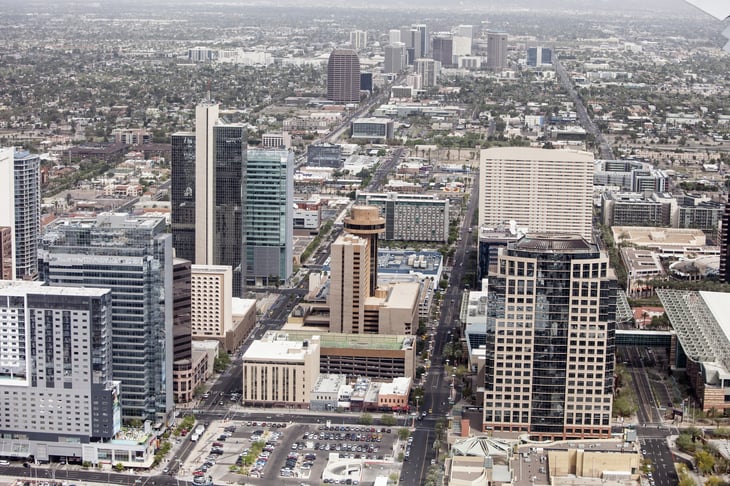 John Wollwerth / Shutterstock.com
John Wollwerth / Shutterstock.com
- General rating: 64.2
- Employment progress in manufacturing (2010-2020): +22.2%
- Manufacturing GDP progress (2010-2020): +37.2%
- Share of producing in complete employment (2020): 5.1%
- Share of producing in complete GDP (2020): 9.6%
8. Raleigh-Cary, NC
 Sharkshock / Shutterstock.com
Sharkshock / Shutterstock.com
- General rating: 64.2
- Employment progress in manufacturing (2010-2020): +14.4%
- Manufacturing GDP progress (2010-2020): +56.8%
- Share of producing in complete employment (2020): 3.8%
- Share of producing in complete GDP (2020): 15.1%
7. Portland-Vancouver-Hillsboro, OR-WA
 Jon Bilous / Shutterstock.com
Jon Bilous / Shutterstock.com
- General rating: 67.2
- Employment progress in manufacturing (2010-2020): +14.1%
- Manufacturing GDP progress (2010-2020): +28.8%
- Share of producing in complete employment (2020): 8.5%
- Share of producing in complete GDP (2020): 17.8%
6. Nashville-Davidson-Murfreesboro-Franklin, TN
 Sean Pavone/Shutterstock.com
Sean Pavone/Shutterstock.com
- General rating: 68.7
- Employment progress in manufacturing (2010-2020): +22.6%
- Manufacturing GDP progress (2010-2020): +44.8%
- Share of producing in complete employment (2020): 6.1%
- Share of producing in complete GDP (2020): 10.3%
5. San Francisco-Oakland-Berkeley, CA
 image not obtainable
image not obtainable
- General grade: 70.0
- Employment progress in manufacturing (2010-2020): +19.0%
- Manufacturing GDP progress (2010-2020): +65.2%
- Share of producing in complete employment (2020): 4.8%
- Share of producing in complete GDP (2020): 15.5%
4. Detroit-Warren-Dearborn, MI
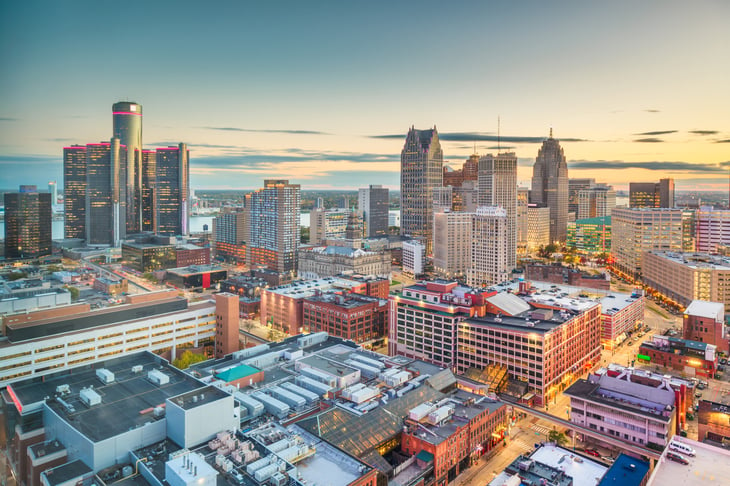 Sean Pavone/Shutterstock.com
Sean Pavone/Shutterstock.com
- General rating: 70.7
- Employment progress in manufacturing (2010-2020): +22.9%
- Manufacturing GDP progress (2010-2020): +20.3%
- Share of producing in complete employment (2020): 9.7%
- Share of producing in complete GDP (2020): 17.0%
3. San Diego-Chula Vista-Carlsbad, CA
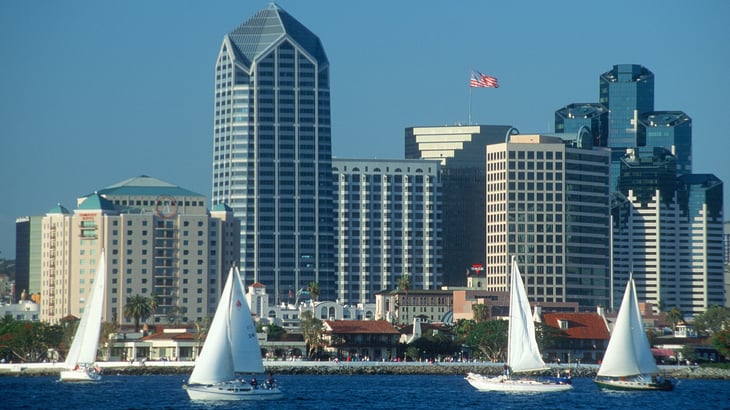 joseph-sohm / Shutterstock.com
joseph-sohm / Shutterstock.com
- General rating: 70.9
- Employment progress in manufacturing (2010-2020): +21.5%
- Manufacturing GDP progress (2010-2020): +58.6%
- Share of producing in complete employment (2020): 6.1%
- Share of producing in complete GDP (2020): 11.8%
2. San Jose-Sunnyvale-Santa Clara, CA
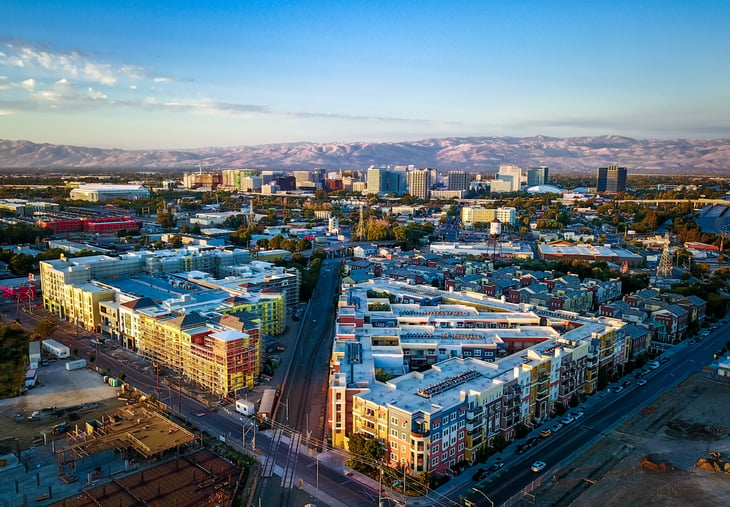 Uladzik Kryhin / Shutterstock.com
Uladzik Kryhin / Shutterstock.com
- General rating: 77.4
- Employment progress in manufacturing (2010-2020): +9.8%
- Manufacturing GDP progress (2010-2020): +94.6%
- Share of producing in complete employment (2020): 12.6%
- Share of producing in complete GDP (2020): 24.2%
1. Grand Rapids-Kentwood, MI
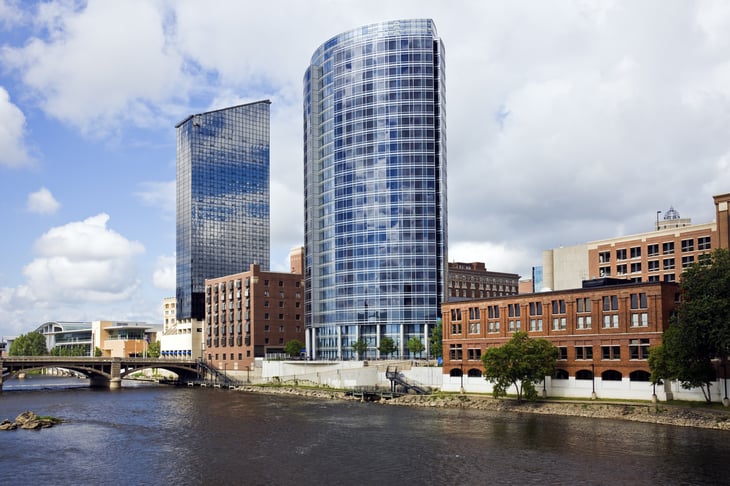 Henryk Sadura / Shutterstock.com
Henryk Sadura / Shutterstock.com
- Whole rating: 79.6
- Employment progress in manufacturing (2010-2020): +28.1%
- Manufacturing GDP progress (2010-2020): +20.3%
- Share of producing in complete employment (2020): 16.5%
- Share of producing in complete GDP (2020): 24.2%
methodology
 image not obtainable
image not obtainable
The info used on this evaluation comes from the US Bureau of Financial Evaluation GDP and employment information. To find out the areas the place manufacturing is prospering, the researchers calculated a composite rating primarily based on the next components and weights:
- Manufacturing Employment Progress from 2010 to 2020 (2X)
- Manufacturing GDP progress from 2010 to 2020 (2X)
- Share of producing in complete employment in 2020 (1X)
- Manufacturing share of complete GDP in 2020 (1X)
To enhance relevance, solely metropolitan areas with a minimum of 100,000 inhabitants had been included. As well as, Metros had been grouped into cohorts primarily based on inhabitants dimension: small (100,000–349,999), medium (350,000–999,999), and huge (1 million or extra).
Disclosure: The data you learn right here is at all times goal. Nevertheless, we typically obtain compensation once you click on hyperlinks in our tales.